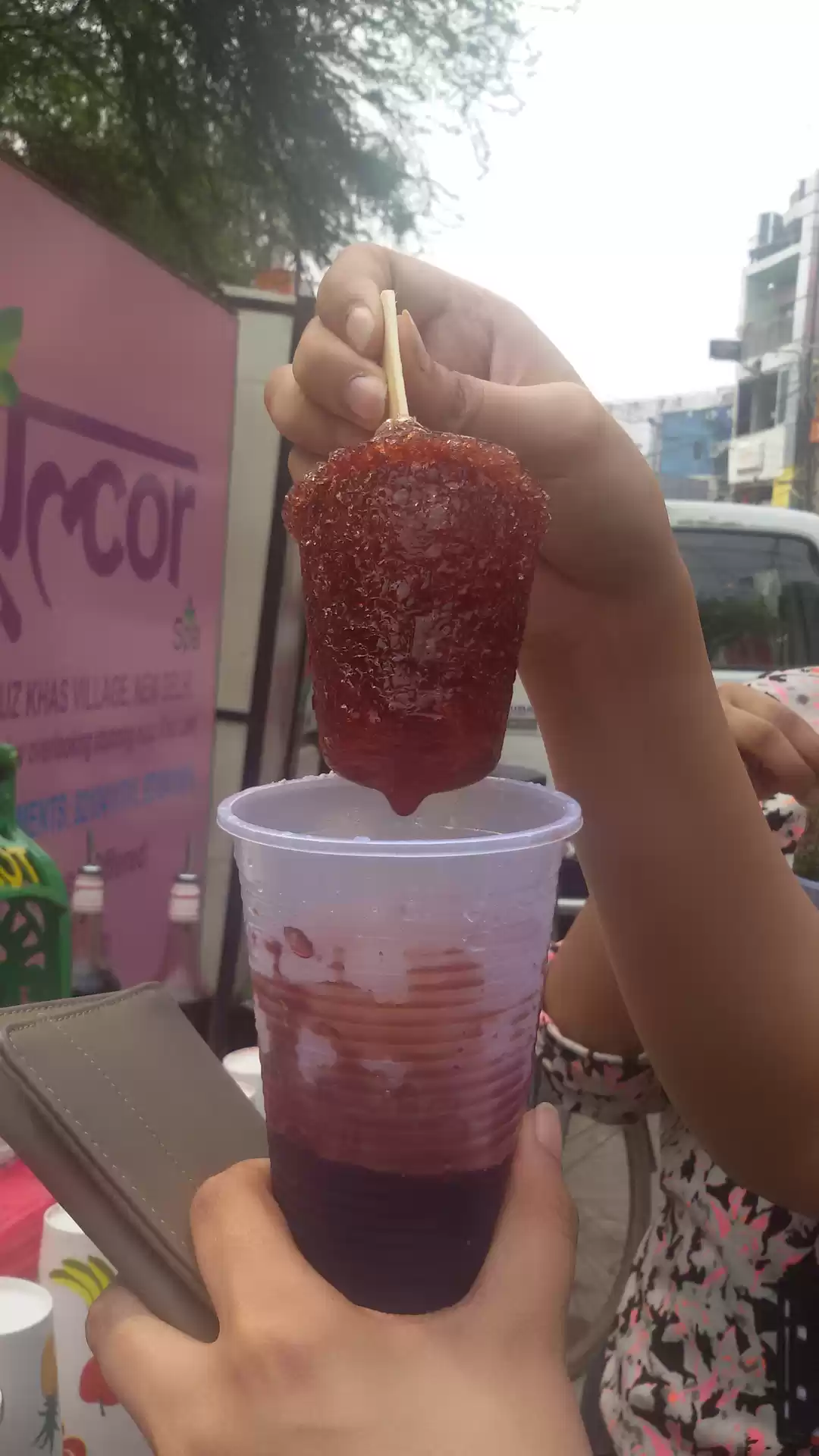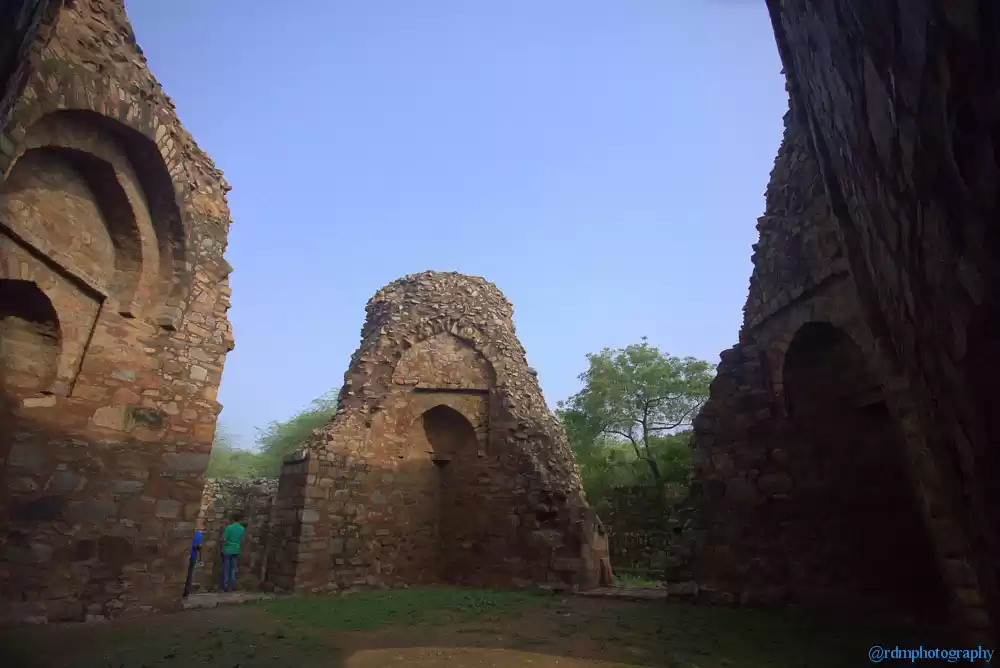Have you ever wondered what it would be like to travel back in time and witness the rise and fall of empires, the birth and spread of religions, and the evolution and transformation of civilizations? If yes, then Mehrauli is the place for you. Mehrauli is the oldest and most fascinating city of Delhi, inhabited for over a thousand years by various dynasties, communities, and cultures. It is a treasure trove of historical monuments, cultural festivals, and lifestyle options that will captivate and enchant you.
In this article, we will explore and showcase the various attractions, activities, and experiences that Mehrauli has to offer to visitors and locals alike. Whether you are a history buff, a culture lover, a foodie, or a shopper, you will find something to suit your taste and interest in Mehrauli. We will also provide you with some useful tips and information on how to plan your trip, when to visit, where to stay, and what to expect from Mehrauli. So, without further ado, let us dive into the amazing world of Mehrauli.
History
Mehrauli’s history is as old and rich as Delhi itself. Mehrauli was the first of the seven cities of Delhi, founded by the Tomar Rajputs in the 11th century. It was later conquered by the Chauhans, who ruled from the Qila Lal Kot, a massive fort that still stands today. In 1192, Mehrauli witnessed the beginning of the Delhi Sultanate, when Qutubuddin Aibak defeated Prithviraj Chauhan and built the Qutub Minar, the tallest brick minaret in the world. Mehrauli continued to flourish under the successive Turkic and Afghan rulers, such as the Khaljis, the Tughlaqs, and the Lodis, who built several mosques, tombs, and madrasas in the area.

Mehrauli’s history took a new turn under the Mughals, who made it a centre of Sufism, with the dargah of Qutubuddin Bakhtiyar Kaki, the disciple of Khwaja Moinuddin Chishti of Ajmer. The Mughal emperors and nobles also constructed several monuments, gardens, and tombs in Mehrauli, such as the Zafar Mahal, the last Mughal palace, and the Hauz-i-Shamsi, a water reservoir built by Iltutmish. Mehrauli also witnessed the decline and fall of the Mughal empire, as well as the rise and revolt of the British, who occupied and damaged many of its historical sites. Mehrauli’s history did not end with the independence of India, as it also played a role in the Dalit movement, led by Dr. B.R. Ambedkar, who staged a satyagraha at the Yogmaya temple, a Hindu shrine dedicated to Lord Krishna’s sister. Some of the prominent historical monuments and sites that you can visit in Mehrauli are:

Qutub Minar:
The iconic symbol of Delhi, the Qutub Minar is a 73-meter high tower that was built by Qutubuddin Aibak and his successors in the 12th and 13th centuries. It is adorned with intricate carvings and inscriptions in Arabic and Persian, and is surrounded by several other monuments, such as the Quwwat-ul-Islam mosque, the Alai Darwaza, the Iron Pillar, and the Tomb of Iltutmish.

Mehrauli Archaeological Park:
A sprawling park that covers an area of 200 acres, the Mehrauli Archaeological Park is home to over 100 historical structures, dating from the 10th to the 19th centuries. Some of the notable ones are the Jamali Kamali Mosque, a 16th-century mosque and tomb complex, the Balban’s Tomb, the resting place of the Sultan of Delhi, the Rajon Ki Baoli, a three-storeyed stepwell, and the Metcalfe’s Folly, a colonial-era pavilion.

Yogmaya Temple:
One of the oldest and most revered temples in Delhi, the Yogmaya Temple derives its name from a black statue of Lord Ram, and is one of the oldest and most revered temples in Delhi. It is also associated with the Ram temple movement, as several political leaders have visited it over the years. The temple is believed to be the birthplace of Lord Krishna’s sister, Yogmaya, and is also the site of a famous Dalit satyagraha, led by Ambedkar in 1930.
Zafar Mahal:
The last Mughal palace, built by Akbar II and Bahadur Shah Zafar in the 19th century, the Zafar Mahal is a magnificent example of Mughal architecture, with a grand gateway, a courtyard, a mosque, and a baoli. It is also the final resting place of several Mughal emperors and princes, including Bahadur Shah Zafar, who was exiled to Burma by the British after the 1857 revolt.
Hauz-i-Shamsi:
A water reservoir built by Iltutmish in 1230, the Hauz-i-Shamsi is said to have been created by the hoofprint of the Prophet Muhammad’s horse, Shamsi, who miraculously appeared in a dream to the Sultan. The reservoir is also known for its floating pavilion, built by Jahangir, and its surrounding monuments, such as the Jahaz Mahal, a 16th-century palace, and the Ahinsa Sthal, a Jain temple with a 13.5 feet high statue of Mahavira.
Culture
Mehrauli’s culture is as diverse and vibrant as its history. Mehrauli is a melting pot of different religions, communities, and traditions, that coexist and interact in harmony. Mehrauli is a place where you can find a mosque, a temple, a church, and a gurudwara, all within a short distance of each other. Mehrauli is also a place where you can witness the fusion of ancient and modern, rural and urban, sacred and secular, in its art, music, literature, and festivals. Some of the cultural aspects and practices that make Mehrauli unique and distinctive are:

Sufism:
Mehrauli is the hub of Sufism in Delhi, with the dargah of Qutubuddin Bakhtiyar Kaki, one of the most revered Sufi saints in India. The dargah is a place of pilgrimage and devotion for people of all faiths, who come to seek blessings, offer prayers, and listen to qawwali, the devotional music of the Sufis. The dargah also hosts the annual Urs festival, which commemorates the death anniversary of the saint, and attracts thousands of devotees and visitors.
Bhakti:
Mehrauli is also a centre of Bhakti, the Hindu tradition of love and devotion to God. Mehrauli is home to several temples and shrines, dedicated to various deities, such as Ram, Krishna, Shiva, Durga, and Hanuman. The most famous of these is the Yogmaya Temple, which is one of the 27 Shakti Peethas, or places where the body parts of Goddess Sati fell. The temple is also the venue of the Phoolwalon Ki Sair, or the festival of the florists, which celebrates the communal harmony and syncretism of Mehrauli.

Dalit activism:
Mehrauli is also a place of Dalit activism, as it was the site of a historic satyagraha, or non-violent protest, led by Dr. B.R. Ambedkar, the chief architect of the Indian Constitution and the champion of the Dalit rights. In 1930, Ambedkar and his followers staged a demonstration outside the Kalaram Temple, demanding the right to enter the temple for the Dalits, who were barred by the upper castes. The satyagraha faced opposition and violence from the upper castes, and the temple authorities refused to open the doors for the Dalits. The satyagraha lasted for four years, and inspired many other Dalit movements across the country.
Urban ecology
Mehrauli is also a place of urban ecology, as it has several green spaces and natural resources that sustain and enrich its environment and biodiversity. Mehrauli has several water bodies, such as the Hauz-i-Shamsi, the Gandhak Ki Baoli, and the Rajon Ki Baoli, that provide water and habitat for various flora and fauna. Mehrauli also has several parks and gardens, such as the Mehrauli Archaeological Park, the Sanjay Van, and the Ahinsa Sthal, that offer recreation and relaxation for the residents and visitors. Some of the cultural festivals and events that you can enjoy in Mehrauli are:

Qutub Festival:
A cultural extravaganza that showcases the classical and contemporary music and dance of India, the Qutub Festival is held every year in November or December, at the backdrop of the Qutub Minar. The festival features performances by renowned artists and groups, such as Ustad Zakir Hussain, Pandit Hariprasad Chaurasia, Shubha Mudgal, and Shiamak Davar. The festival also offers a glimpse of the rich heritage and diversity of Mehrauli and Delhi.
Phoolwalon Ki Sair:
A unique festival that celebrates the communal harmony and syncretism of Mehrauli, the Phoolwalon Ki Sair, or the festival of the florists, is held every year in September or October, after the monsoon. The festival involves a procession of flower-decked pankhas, or fans, that are offered to the Yogmaya Temple and the dargah of Qutubuddin Bakhtiyar Kaki, by the Hindu and Muslim communities of Mehrauli. The festival also includes cultural programs, such as qawwali, kathak, and shehnai, and a fair, where you can buy handicrafts, pottery, and sweets.

Mehrauli Heritage Walks:
A regular activity organized by various groups and agencies, such as the Delhi Heritage Walks, the Indian National Trust for Art and Cultural Heritage (INTACH), and the Delhi Tourism, the Mehrauli Heritage Walks are a great way to explore and learn about the history, culture, and architecture of Mehrauli. The walks cover different themes and routes, such as the Mehrauli Archaeological Park, the Mehrauli Village, the Mehrauli Bazaar, and the Mehrauli Dargah. The walks are usually guided by experts and enthusiasts, who share their knowledge and insights with the participants.
Mehrauli Monsoon Festival:
A recent initiative by the Delhi government to promote tourism and heritage conservation in Mehrauli, the Mehrauli Monsoon Festival is held every year in August, during the rainy season. The festival showcases the beauty and charm of Mehrauli’s monuments, gardens, and water bodies, that come alive with the monsoon showers. The festival also offers various activities and experiences, such as heritage walks, nature trails, photography contests, art workshops, and food stalls.
Lifestyle
Mehrauli’s lifestyle is as lively and enjoyable as its culture. Mehrauli is a blend of old and new, heritage and modernity, chaos and serenity. Mehrauli is a place where you can find a variety of options and choices to suit your mood and preference. Whether you want to indulge in some delicious food, shop for some exquisite items, admire some stunning art, or relax in some cozy ambiance, you will find it all in Mehrauli. Some of the lifestyle aspects and activities that make Mehrauli appealing and enjoyable are:

Food:
Mehrauli is a food lover’s paradise, as it offers a range of cuisines and dishes, from the traditional to the contemporary, from the street to the fine dining. You can savour the authentic Mughlai and Awadhi delicacies, such as kebabs, biryanis, and kormas, at places like Alkauser, Karim’s, and Al Jawahar. You can also enjoy the fusion of Indian and international flavours, such as Mediterranean, Thai, and Italian, at places like Qla, Olive Bar & Kitchen, Lavaash By Saby, Thai High, and Dramz Whiskey Bar & Lounge. You can also treat yourself to some mouth-watering desserts, such as kulfi, rabri, and jalebi, at places like Roshan Di Kulfi, Giani’s, and Old Famous Jalebi Wala.
Shopping:
Mehrauli is a shopper’s delight, as it offers a variety of items and products, from the ethnic to the trendy, from the cheap to the expensive, from the local to the global. You can shop for some exquisite handicrafts, pottery, and textiles, at places like Ambawatta One, Anokhi, Fabindia, Ogaan, and Good Earth. You can also shop for some fashionable clothes, accessories, and gadgets, at places like Select Citywalk, DLF Emporio, and DLF Promenade. You can also shop for some fresh flowers, fruits, and vegetables, at the Mehrauli Bazaar, which is one of the oldest and busiest markets in Delhi.

Art:
Mehrauli is an art lover’s dream, as it offers a variety of art forms and expressions, from the ancient to the modern, from the sacred to the secular, from the classical to the contemporary. You can admire the art and architecture of the historical monuments and sites, such as the Qutub Minar, the Zafar Mahal, and the Yogmaya Temple, which showcase the styles and influences of different eras and cultures. You can also admire the art and creativity of the modern artists and designers, who display their works and collections at the galleries and studios, such as the Kiran Nadar Museum of Art, the Gallery Espace, and the Khoj Studios.
Entertainment:
Mehrauli is an entertainment hub, as it offers a variety of options and venues to have fun and relax, from the day to the night, from the indoor to the outdoor, from the quiet to the loud. You can enjoy the nature and scenery of the parks and gardens, such as the Mehrauli Archaeological Park, the Sanjay Van, and the Ahinsa Sthal, which offer a green and serene escape from the hustle and bustle of the city. You can also enjoy the music and nightlife of the bars and clubs, such as Qla, Olive Bar & Kitchen, Lavaash By Saby, Thai High, and Dramz Whiskey Bar & Lounge, which offer a lively and vibrant atmosphere to party and socialize.
We hope that this article has given you a glimpse of the history, culture, and lifestyle of Mehrauli, Delhi’s oldest and most fascinating city. Mehrauli is a place that has something for everyone, and that will never cease to amaze and delight you. Whether you are a first-time visitor or a regular traveller, you will always find something new and exciting to explore and experience in Mehrauli.
If you are interested in visiting and discovering Mehrauli, we have a special offer for you. You can subscribe to our newsletter and get a free guide to Mehrauli, which will provide you with more details and tips on how to plan your trip, when to visit, where to stay, and what to expect from Mehrauli. You can also book a tour with us, and get a personalized and guided tour of Mehrauli, with a local expert who will show you the best and hidden gems of Mehrauli.
Thank you for reading this article, and we hope to see you soon in Mehrauli.






































